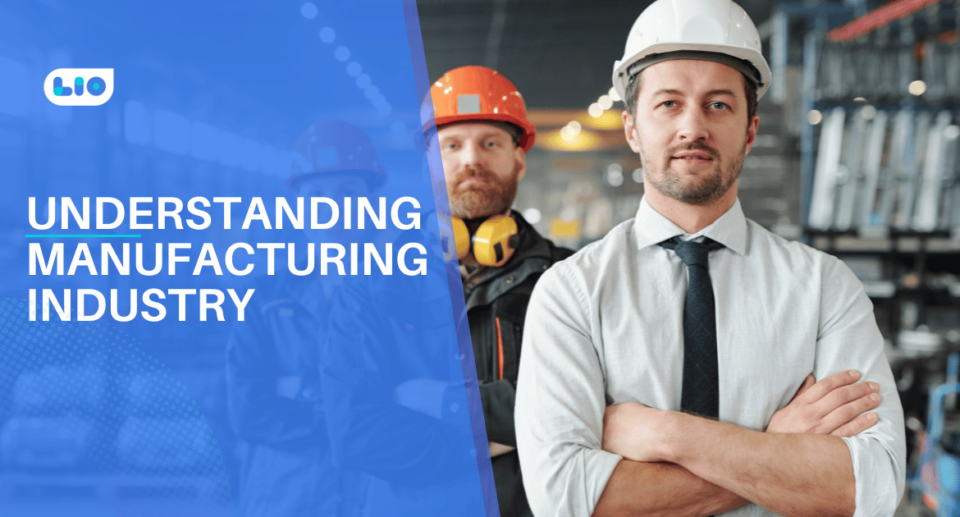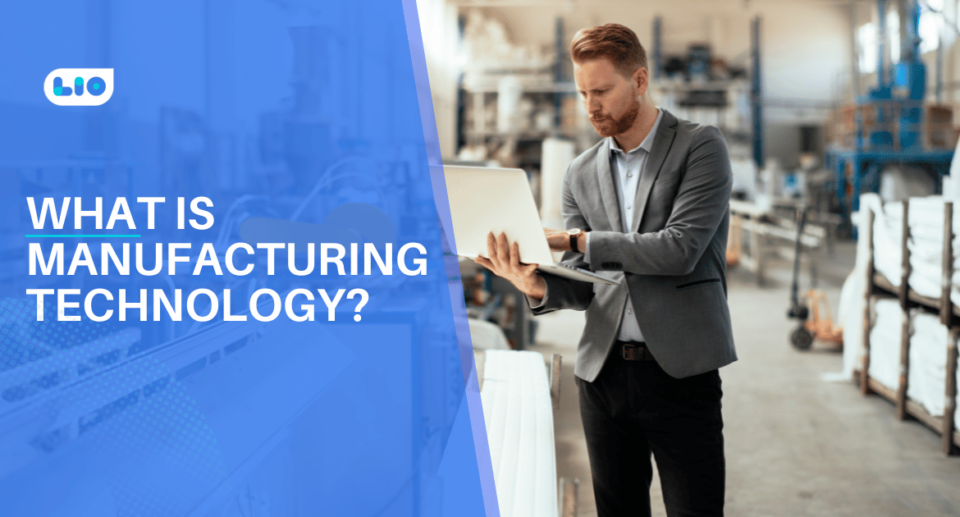Total Productive Maintenance for Optimal Performance
Gaurav Singh Rawat
- July 1, 2024
- 12 Min Read
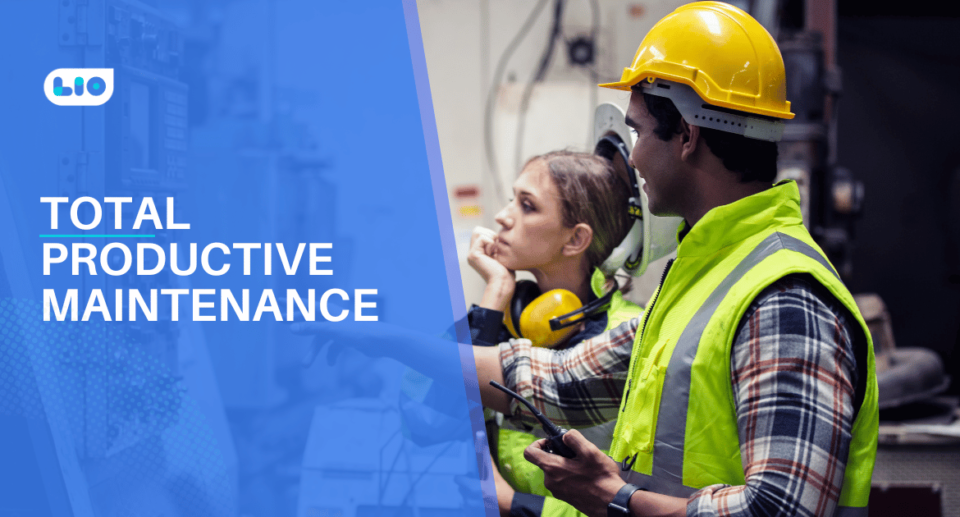
Total Productive Maintenance (TPM) is a comprehensive approach aimed at achieving optimal performance in manufacturing and production environments. By integrating proactive and preventive maintenance strategies, TPM seeks to maximize equipment effectiveness, reduce downtime, and enhance overall productivity.
This methodology involves all employees, from operators to management, fostering a culture of continuous improvement and collaboration. In this blog, we will explore how implementing TPM can lead to significant gains in efficiency, reliability, and quality.
What is Total Productive Maintenance?
Total Productive Maintenance (TPM) is a holistic approach to equipment maintenance that aims to maximize the operational efficiency of machinery and production processes. Originating in Japan in the 1960s, TPM emphasizes proactive and preventive maintenance to achieve perfect production, which means zero breakdowns, zero defects, and zero accidents.
The philosophy behind TPM involves the active participation of all employees, from operators to managers, in maintaining equipment and improving processes. This approach not only enhances equipment reliability and productivity but also fosters a culture of continuous improvement and teamwork within the organization.

Implement TPM Today
Boost your equipment efficiency and reduce downtime with Total Productive Maintenance. Start implementing TPM strategies now for a more productive facility.
Benefits of Total Productive Maintenance (TPM)
Total Productive Maintenance (TPM) is a comprehensive approach that aims to maximize equipment effectiveness and ensure optimal performance in manufacturing environments. Here are some key benefits of implementing TPM:
Increased Equipment Effectiveness
TPM ensures that equipment operates at peak efficiency by minimizing downtime and maximizing productivity. Regular maintenance and proactive measures help in maintaining equipment in top condition, leading to higher overall equipment effectiveness (OEE).
Reduced Maintenance Costs
By focusing on preventive and proactive maintenance, TPM helps in reducing the need for costly repairs and emergency maintenance. This approach not only lowers maintenance expenses but also extends the lifespan of equipment, resulting in long-term cost savings.
Improved Product Quality
TPM contributes to higher product quality by ensuring that equipment is well-maintained and operates reliably. This reduces the likelihood of defects and inconsistencies in the production process, leading to better quality control and customer satisfaction.
Improved Product Quality
A key aspect of TPM is maintaining a safe working environment. Regular inspections and maintenance activities help in identifying and addressing potential hazards, thereby reducing the risk of accidents and injuries. This focus on safety ensures a healthier workplace for all employees.
Enhanced Safety
A key aspect of TPM is maintaining a safe working environment. Regular inspections and maintenance activities help in identifying and addressing potential hazards, thereby reducing the risk of accidents and injuries. This focus on safety ensures a healthier workplace for all employees.
The 5S Foundation of TPM
The 5S Foundation is a critical component of Total Productive Maintenance (TPM), focusing on workplace organization, standardization, and waste elimination. Here is a detailed description of each of the 5S principles:

Sort (Seiri)
Objective: Eliminate unnecessary items from the workplace.
Description: The first step in the 5S methodology involves sorting through all items in the workspace and removing those that are not needed for current operations. This helps to reduce clutter, improve efficiency, and create a safer work environment.
Implementation Steps:
- Identify and categorize items as necessary or unnecessary.
- Remove unnecessary items from the workspace.
- Use a red-tagging system to mark items that need to be evaluated for disposal or relocation.
Set in Order (Seiton)
Objective: Organize necessary items for easy access and efficient workflow.
Description: Once unnecessary items are removed, the remaining items should be organized in a way that maximizes efficiency. This involves arranging tools, materials, and equipment in a logical manner so that they are easy to find and use.
Implementation Steps:
- Assign specific locations for each item based on frequency of use.
- Use labels, shadow boards, and color coding to identify storage locations.
- Ensure that items used together are stored together.
Shine (Seiso)
Objective: Clean the workspace to maintain a high standard of cleanliness and detect issues early.
Description: The Shine phase involves thoroughly cleaning the workspace, including all equipment and tools. Regular cleaning helps to maintain equipment in good working condition and allows for early detection of issues such as leaks or wear.
Implementation Steps:
- Establish a routine cleaning schedule.
- Assign cleaning responsibilities to employees.
- Use cleaning as an opportunity to inspect equipment and identify maintenance needs.

Reduce Downtime
Minimize unplanned maintenance and keep your production line running smoothly. Discover the benefits of Total Productive Maintenance.
Standardize (Seiketsu)
Objective: Establish standards to maintain organization and cleanliness.
Description: Standardizing involves creating consistent procedures and practices to ensure that the first three steps (Sort, Set in Order, Shine) are maintained over time. This includes developing checklists, schedules, and visual management tools.
Implementation Steps:
- Develop standard operating procedures (SOPs) for sorting, organizing, and cleaning.
- Create visual aids such as charts, labels, and checklists.
- Train employees on the standards and ensure adherence through regular audits.
Sustain (Shitsuke)
Objective: Maintain and review standards to ensure continuous improvement.
Description: The Sustain phase focuses on embedding the 5S principles into the organizational culture. This involves regular audits, continuous training, and fostering a culture of discipline and continuous improvement.
Implementation Steps:
- Conduct regular audits to ensure compliance with 5S standards.
- Provide ongoing training and reinforcement for employees.
- Encourage employee involvement and feedback to identify areas for improvement.
Role of 5S Foundation in TPM
The 5S Foundation is a critical component of Total Productive Maintenance (TPM), providing the necessary structure for creating an organized, efficient, and safe workplace. Here’s a detailed look at the role of the 5S Foundation in TPM:
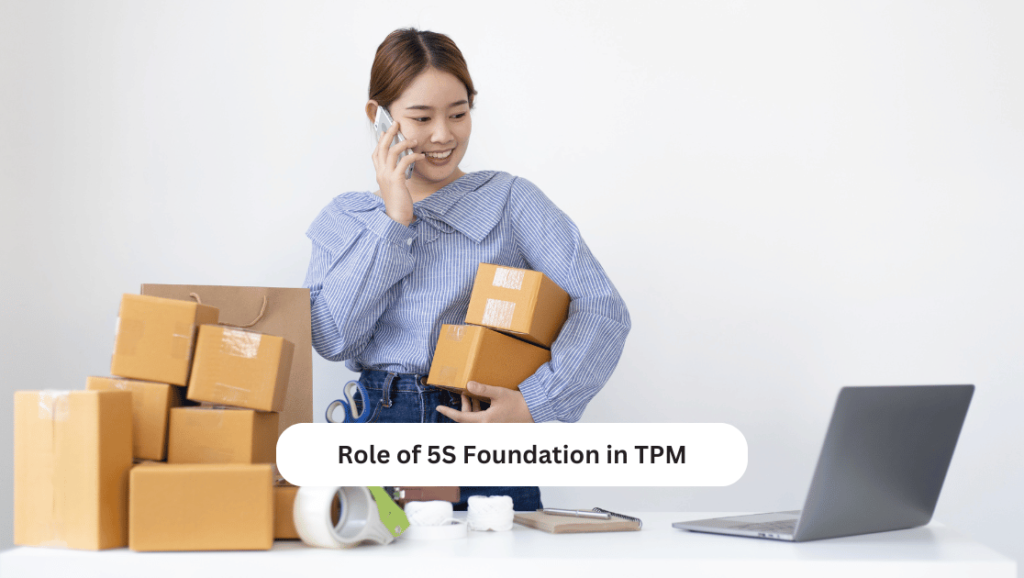
Creating a Solid Foundation for TPM
The 5S Foundation lays the groundwork for other TPM pillars by establishing a clean, organized, and efficient workplace. This environment is essential for the effective implementation of TPM activities such as Autonomous Maintenance, Planned Maintenance, and Quality Management. The 5S principles ensure that the workplace is free of clutter, which helps in identifying and addressing issues promptly.
Enhancing Equipment Reliability and Efficiency
By implementing the 5S principles, companies can improve equipment reliability and efficiency. A well-organized workspace makes it easier to perform maintenance tasks, reduces the time spent searching for tools and materials, and minimizes the risk of equipment failures. This leads to increased Overall Equipment Effectiveness (OEE), a key metric in TPM.
Promoting a Culture of Continuous Improvement
The 5S Foundation fosters a culture of continuous improvement by encouraging employees to take ownership of their workspaces and continuously seek ways to improve them. This culture is vital for the success of TPM, as it ensures that improvements are sustained over time and that employees are actively involved in the maintenance process.
Improving Safety and Reducing Accidents
A clean and organized workplace reduces the risk of accidents and injuries, which is a crucial aspect of TPM. By eliminating unnecessary items and ensuring that tools and materials are stored properly, the 5S principles help create a safer working environment. This not only protects employees but also reduces downtime caused by accidents.
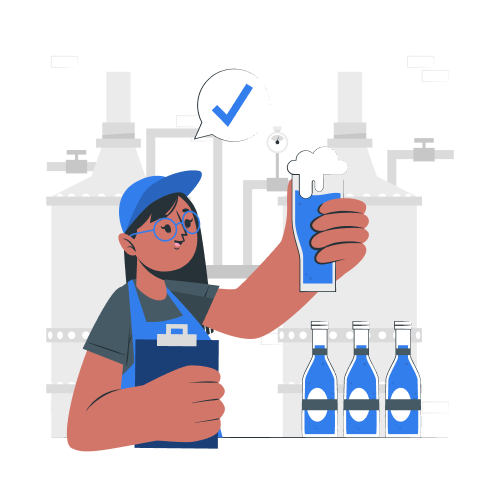
Improve Quality Output
Achieve higher quality production with TPM. Focus on maintenance strategies that reduce defects and enhance product consistency.
Enhancing Employee Engagement and Morale
Involving employees in the 5S implementation process empowers them and increases their engagement and morale. When employees take part in organizing and maintaining their workspaces, they develop a sense of ownership and pride in their work. This engagement is essential for the successful implementation of TPM, as it relies on the active participation of all employees.
Standardizing Processes and Improving Quality
The 5S principles help standardize work processes, which leads to consistency and higher quality in production. Standardization ensures that everyone follows the same procedures, reducing variability and errors. This is particularly important in TPM, where consistent maintenance practices are crucial for maintaining equipment reliability and product quality.
Visual Management and Problem Identification
The 5S Foundation includes visual management tools that make it easier to identify and address problems in the workplace. By using labels, shadow boards, and color coding, companies can quickly spot issues such as missing tools, leaks, or wear and tear on equipment. This visual approach supports TPM by enabling early detection and resolution of problems, preventing minor issues from becoming major failures.
The Eight Pillars of Total Productive Maintenance
Total Productive Maintenance (TPM) is a holistic approach to equipment maintenance that aims to achieve perfect production by eliminating breakdowns, defects, and accidents. The eight pillars of TPM provide a structured framework for achieving these goals. Here’s an overview of each pillar:
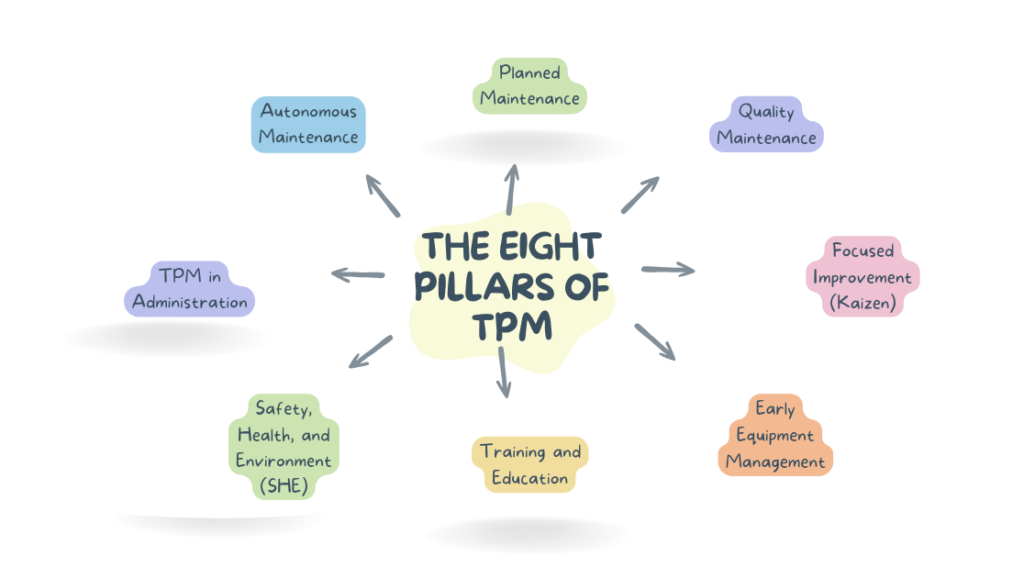
Focused Improvement (Kaizen)
Objective: Continuous improvement through small, incremental changes.
Description: This pillar encourages all employees to participate in identifying and implementing improvements. Cross-functional teams work together to solve problems and enhance processes, aiming to reduce waste and improve efficiency.
Autonomous Maintenance
Objective: Empower operators to maintain their equipment.
Description: Operators are trained to perform routine maintenance tasks such as cleaning, lubrication, and inspection. This involvement helps in early detection of issues and reduces the burden on specialized maintenance teams.
Quality Maintenance
Objective: Ensure zero defects in production.
Description: This pillar focuses on maintaining high-quality standards by preventing defects. Techniques such as Root Cause Analysis (RCA) and preventive measures are used to identify and eliminate sources of quality issues.
Planned Maintenance
Objective: Schedule maintenance activities to prevent breakdowns.
Description: Maintenance tasks are planned based on predicted failure rates and historical data. This proactive approach ensures that maintenance is performed during non-production times, minimizing disruptions.
Early Equipment Management
Objective: Design equipment for reliability and maintainability.
Description: This pillar involves incorporating maintenance considerations into the design and installation of new equipment. Feedback from current operations is used to improve the design and reduce startup issues.
Training and Education
Objective: Develop a skilled and knowledgeable workforce.
Description: Continuous training programs are implemented to enhance the skills of operators and maintenance personnel. This ensures that employees are capable of performing their roles effectively and can adapt to new technologies.
Safety, Health, and Environment (SHE)
Objective: Create a safe and healthy work environment.
Description: This pillar aims to eliminate workplace hazards and ensure compliance with safety regulations. Preventive measures and regular safety audits are conducted to protect employees and the environment.
Administrative TPM
Objective: Apply TPM principles to administrative functions.
Description: TPM techniques are extended to administrative and support functions such as logistics and planning. This helps in eliminating waste and improving efficiency in non-manufacturing areas, ensuring that all parts of the organization contribute to overall productivity.
How can Lio help Production Businesses??
Lio is a powerful AI-driven platform that can significantly enhance Total Productive Maintenance (TPM) efforts for businesses. Here are the key ways Lio can help businesses in implementing and optimizing TPM:
Data Analysis and Insights
Lio leverages robust AI capabilities to analyze vast amounts of data, providing valuable insights into equipment performance and maintenance needs. This helps in identifying patterns and predicting potential failures before they occur, thus supporting proactive maintenance strategies.
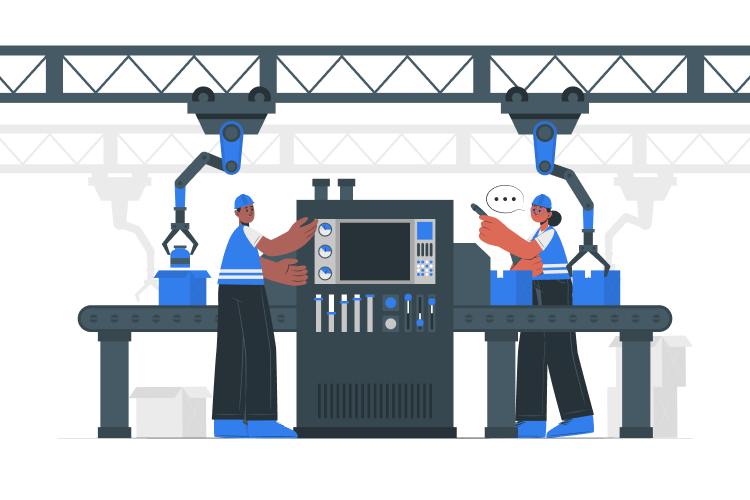
Enhance Safety Protocols
Lio supports your TPM initiatives by improving workplace safety through proactive maintenance and real-time monitoring.
Real-Time Monitoring
By integrating with IoT sensors and connected devices, Lio enables real-time monitoring of production lines and equipment performance. This continuous monitoring helps in detecting anomalies early, reducing unplanned downtime and improving overall equipment effectiveness (OEE).
Customizable Workflows
Lio allows businesses to create and customize workflows tailored to their specific maintenance needs. This flexibility ensures that maintenance processes are optimized for the unique requirements of each piece of equipment, enhancing the effectiveness of TPM initiatives.
Automated Maintenance Scheduling
With Lio, businesses can automate maintenance scheduling based on historical data and predictive analytics. This ensures that maintenance tasks are carried out at optimal times, reducing the risk of equipment failures and extending the lifespan of machinery.
Integration with Existing Systems
Lio integrates seamlessly with over 100 existing applications, including ERP systems, MES, and other manufacturing software. This integration facilitates smooth data exchange and interoperability, ensuring that TPM processes are implemented without disrupting existing workflows.
Mobile Accessibility
Lio is a mobile-friendly platform that allows maintenance teams to access critical information and perform tasks on the go. This mobility ensures that maintenance activities can be carried out efficiently, even in remote or hard-to-reach areas of the facility.
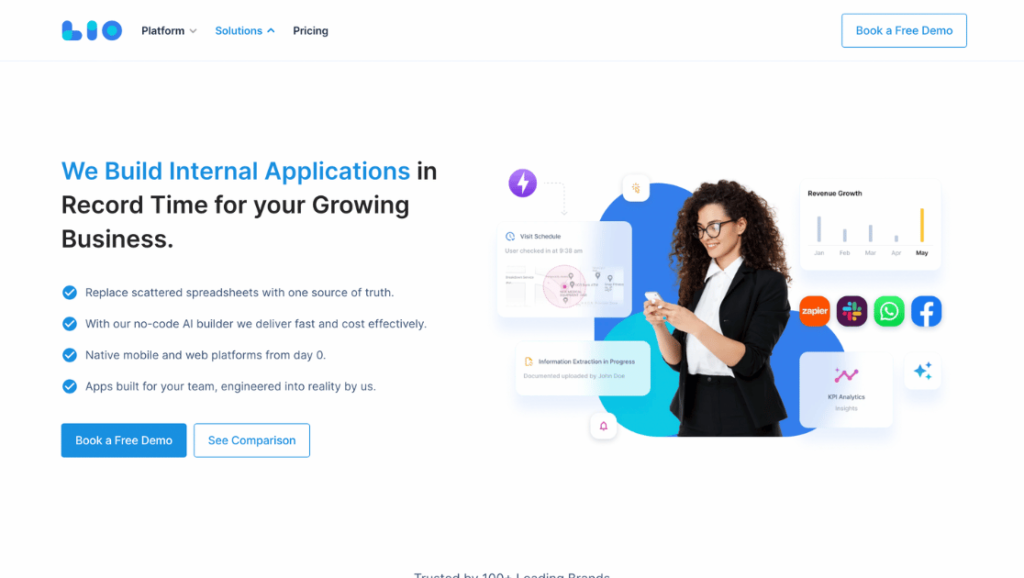
Conclusion
Implementing Total Productive Maintenance (TPM) is essential for achieving optimal performance in any manufacturing setting. By focusing on proactive maintenance, employee involvement, and continuous improvement, TPM helps reduce downtime, increase equipment reliability, and enhance product quality.
The benefits of TPM extend beyond the shop floor, fostering a culture of efficiency and collaboration throughout the organization. Embracing TPM principles can transform your operations, leading to sustained productivity and long-term success.
Frequently Asked Questions (FAQs)
How does TPM contribute to reducing production costs?
TPM reduces production costs by minimizing equipment downtime, preventing breakdowns, and improving overall equipment efficiency (OEE). This leads to fewer disruptions, lower maintenance costs, and higher productivity, ultimately reducing the cost per unit produced.
What role do operators play in TPM?
In TPM, operators are empowered to take on routine maintenance tasks such as cleaning, lubrication, and inspection. This involvement helps in early detection of potential issues, reduces the workload on maintenance teams, and fosters a sense of ownership and responsibility among operators.
Can TPM be applied to non-manufacturing industries?
Yes, TPM principles can be adapted for use in non-manufacturing industries such as healthcare, logistics, and administrative functions. The focus remains on improving equipment reliability, reducing downtime, and fostering a culture of continuous improvement.
How does TPM improve workplace safety?
TPM improves workplace safety by promoting regular maintenance and inspections, which help identify and mitigate potential hazards. Additionally, TPM emphasizes training and awareness, ensuring that all employees are knowledgeable about safety protocols and practices.
What are the common challenges in implementing TPM?
Common challenges in implementing TPM include resistance to change, lack of employee engagement, insufficient training, and inadequate resources. Overcoming these challenges requires strong leadership, clear communication, comprehensive training programs, and a commitment to continuous improvement.

